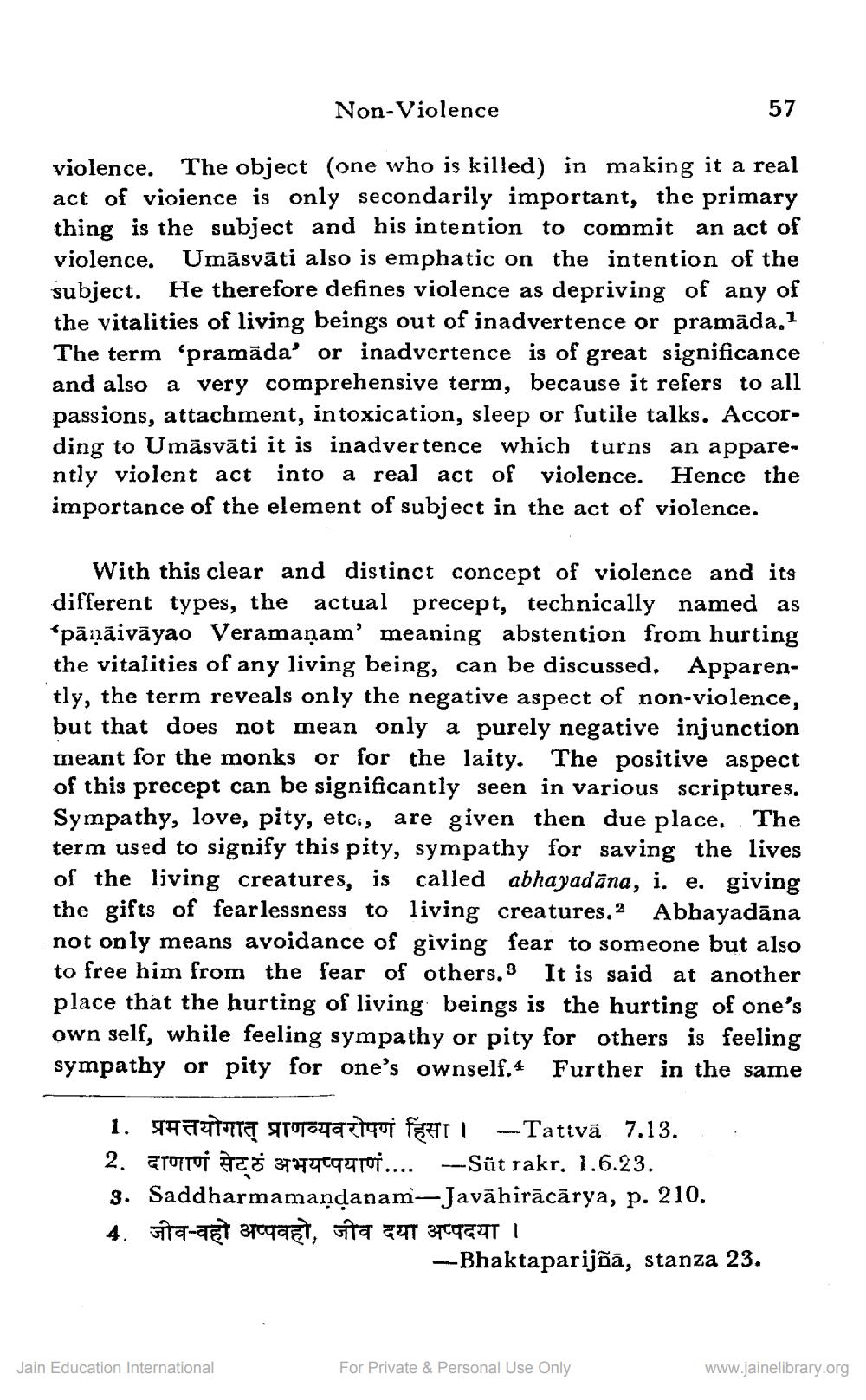________________
Non-Violence
violence. The object (one who is killed) in making it a real act of vioience is only secondarily important, the primary thing is the subject and his intention to commit an act of violence. Umāsvāti also is emphatic on the intention of the subject. He therefore defines violence as depriving of any of the vitalities of living beings out of inadvertence or pramāda, The term 'pramāda' or inadvertence is of great significance and also a very comprehensive term, because it refers to all passions, attachment, intoxication, sleep or futile talks. According to Umāsvāti it is inadvertence which turns an apparently violent act into a real act of violence. Hence the importance of the element of subject in the act of violence.
With this clear and distinct concept of violence and its different types, the actual precept, technically named as *pāņāivāyao Veramaņam' meaning abstention from hurting the vitalities of any living being, can be discussed. Apparently, the term reveals only the negative aspect of non-violence, but that does not mean only a purely negative injunction meant for the monks or for the laity. The positive aspect of this precept can be significantly seen in various scriptures. Sympathy, love, pity, etc., are given then due place. The term used to signify this pity, sympathy for saving the lives of the living creatures, is called abhayadāna, i. e. giving the gifts of fearlessness to living creatures, 2 Abhayadāna not only means avoidance of giving fear to someone but also to free him from the fear of others. It is said at another place that the hurting of living beings is the hurting of one's own self, while feeling sympathy or pity for others is feeling sympathy or pity for one's ownself.4 Further in the same
1. ATTITa grotoyaztqui fai - Tativä 7.13. 2. grej TTT 27HUTTATOP.... ---Süt rakr. 1.6.23. 3. Saddharmamandanam-Javāhirācārya, p. 210. 4. adet 379ael, ita za 39CUTI
--Bhaktaparijñā, stanza 23.
Jain Education International
For Private & Personal Use Only
www.jainelibrary.org




